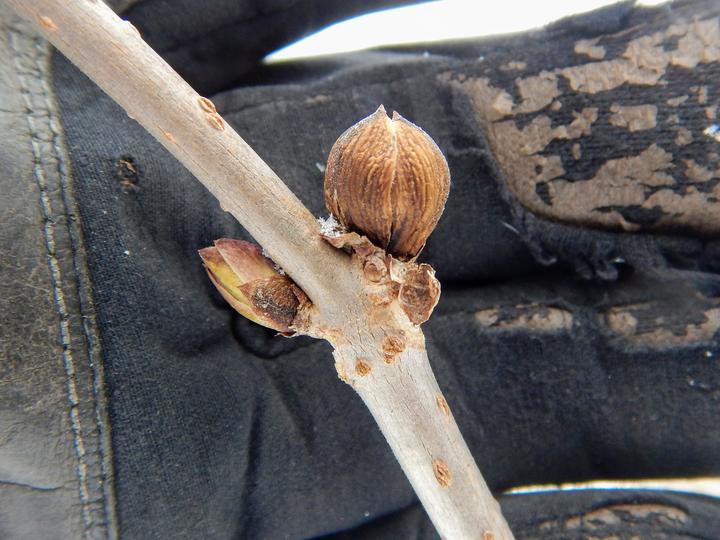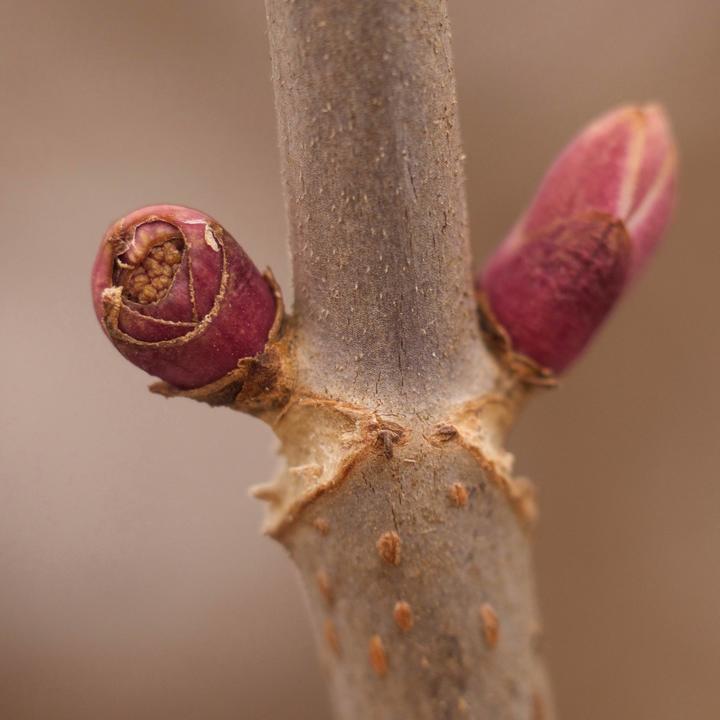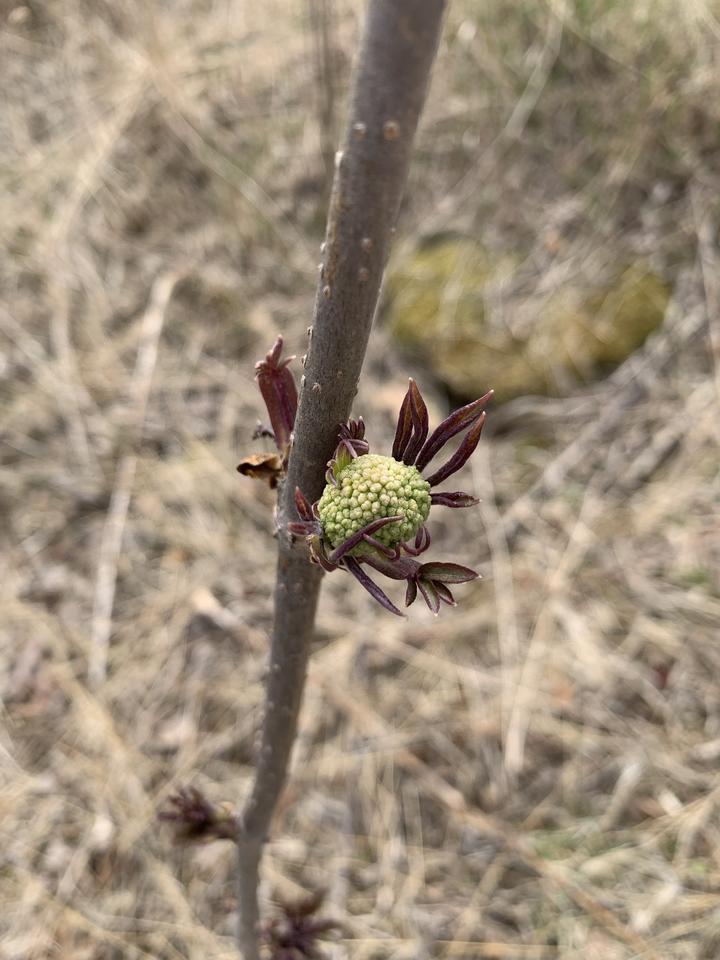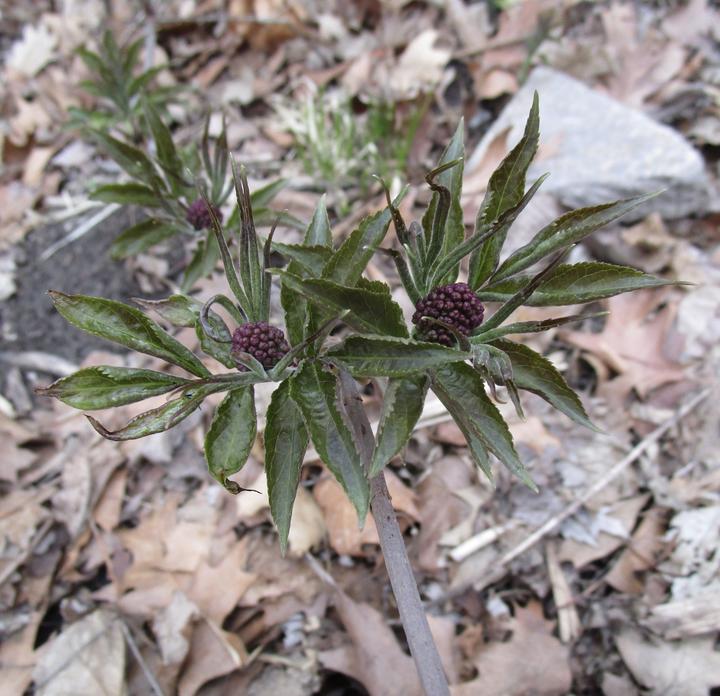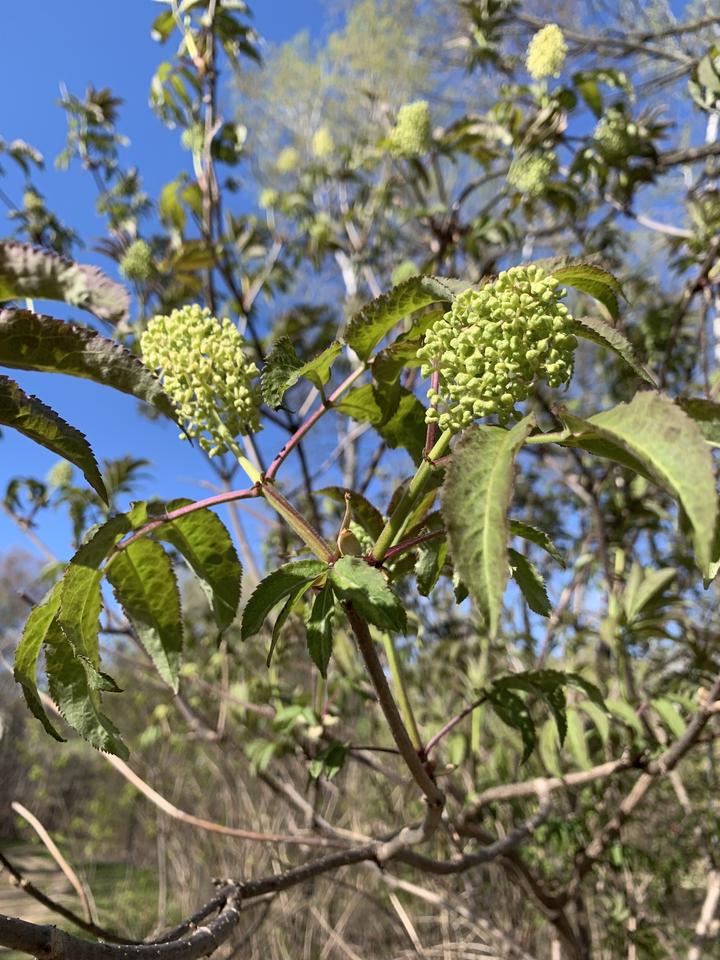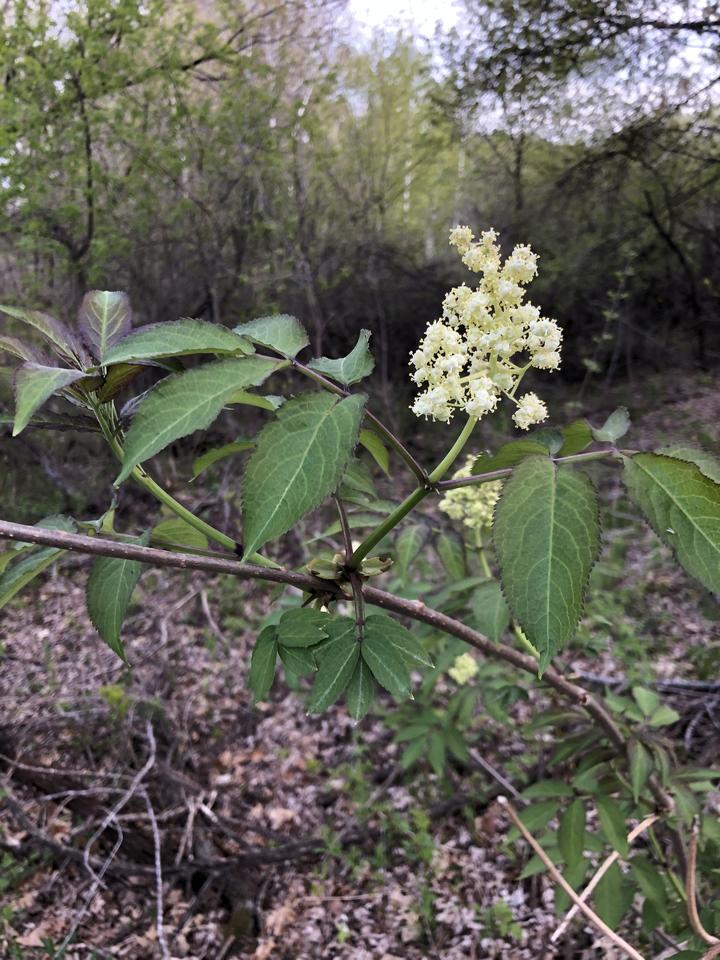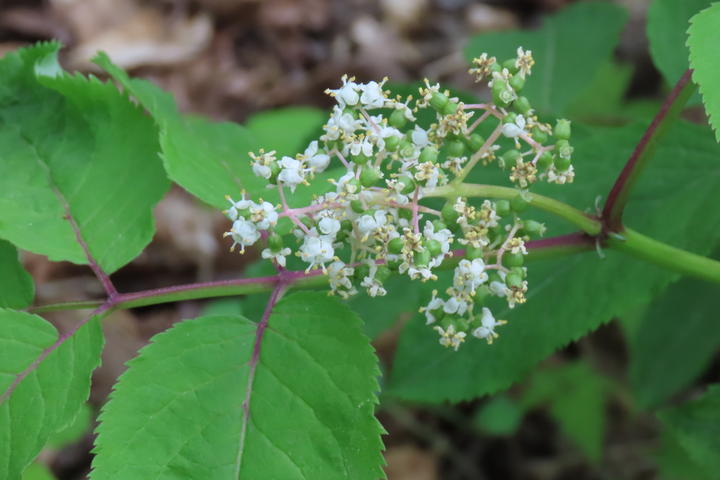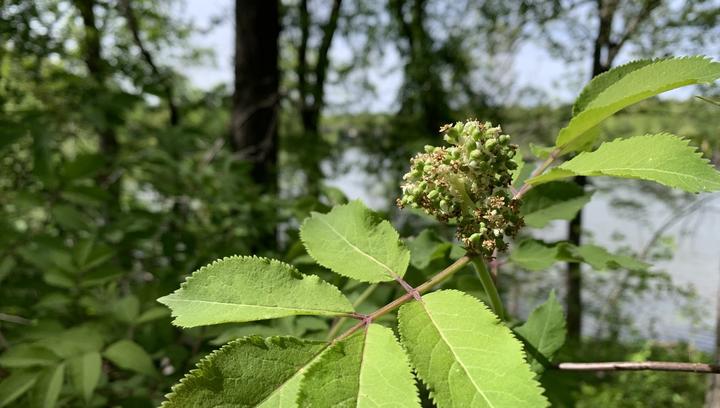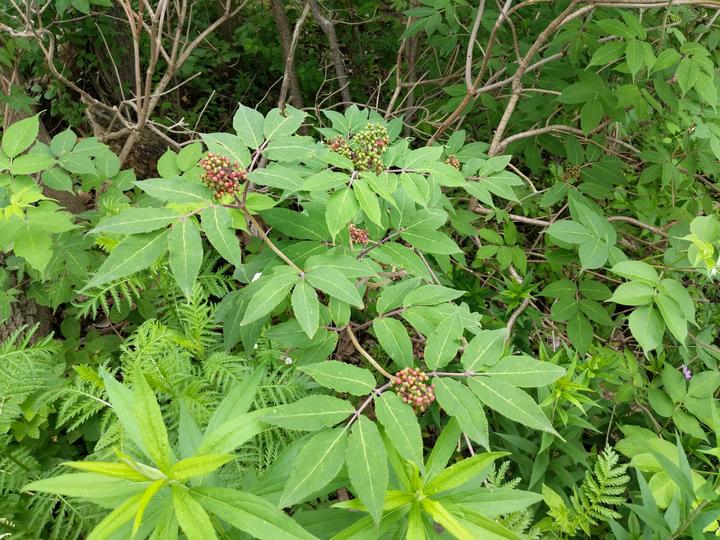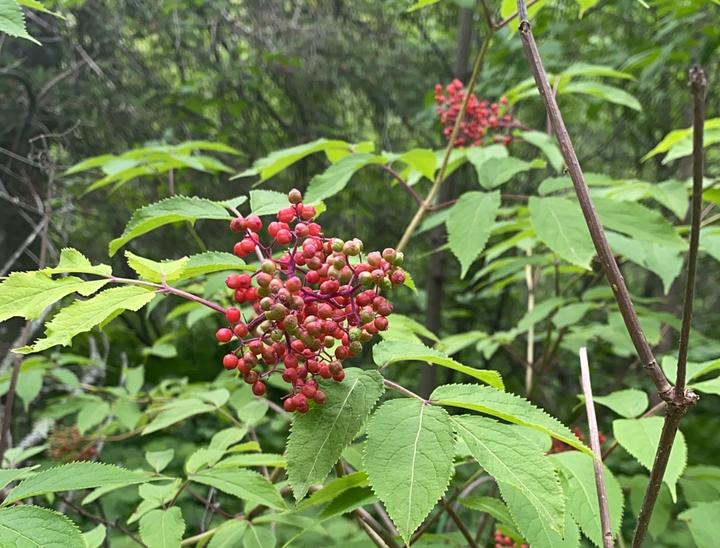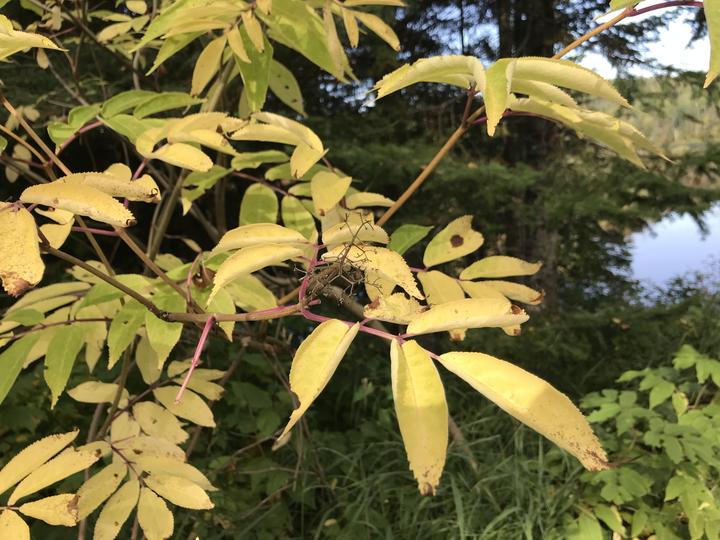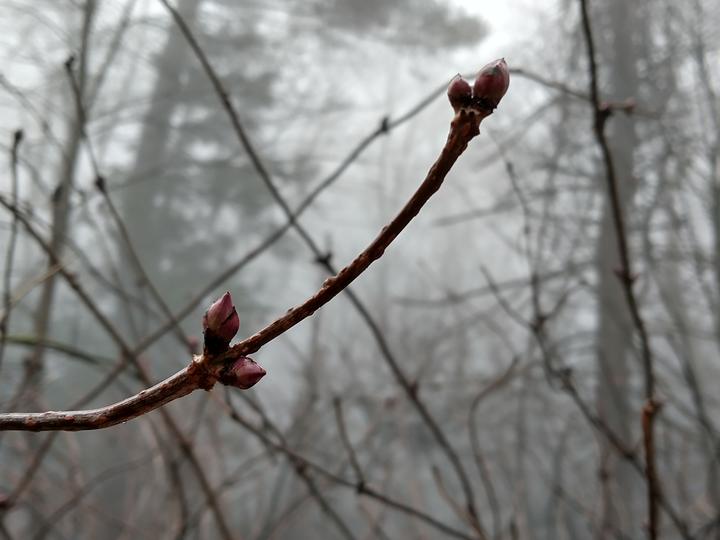More names for this plant
The Dakota and Anishinaabe were among the earliest people to name Minnesota’s plants and animals, as well as to understand them in relation to Minnesota’s climate and seasons. Those original names are still in use, and several are included on the Season Watch website. However, complete translations were not available.
Latin (or scientific name): Sambucus racemosa
The scientific community has a convention of assigning agreed-upon Latin names to every kind of organism. Using scientific names helps people communicate confidently about the same organism and organize lifeforms based on how closely related they are.
More common names: Red-berried elder, red elder, scarlet elderberry
Page contents
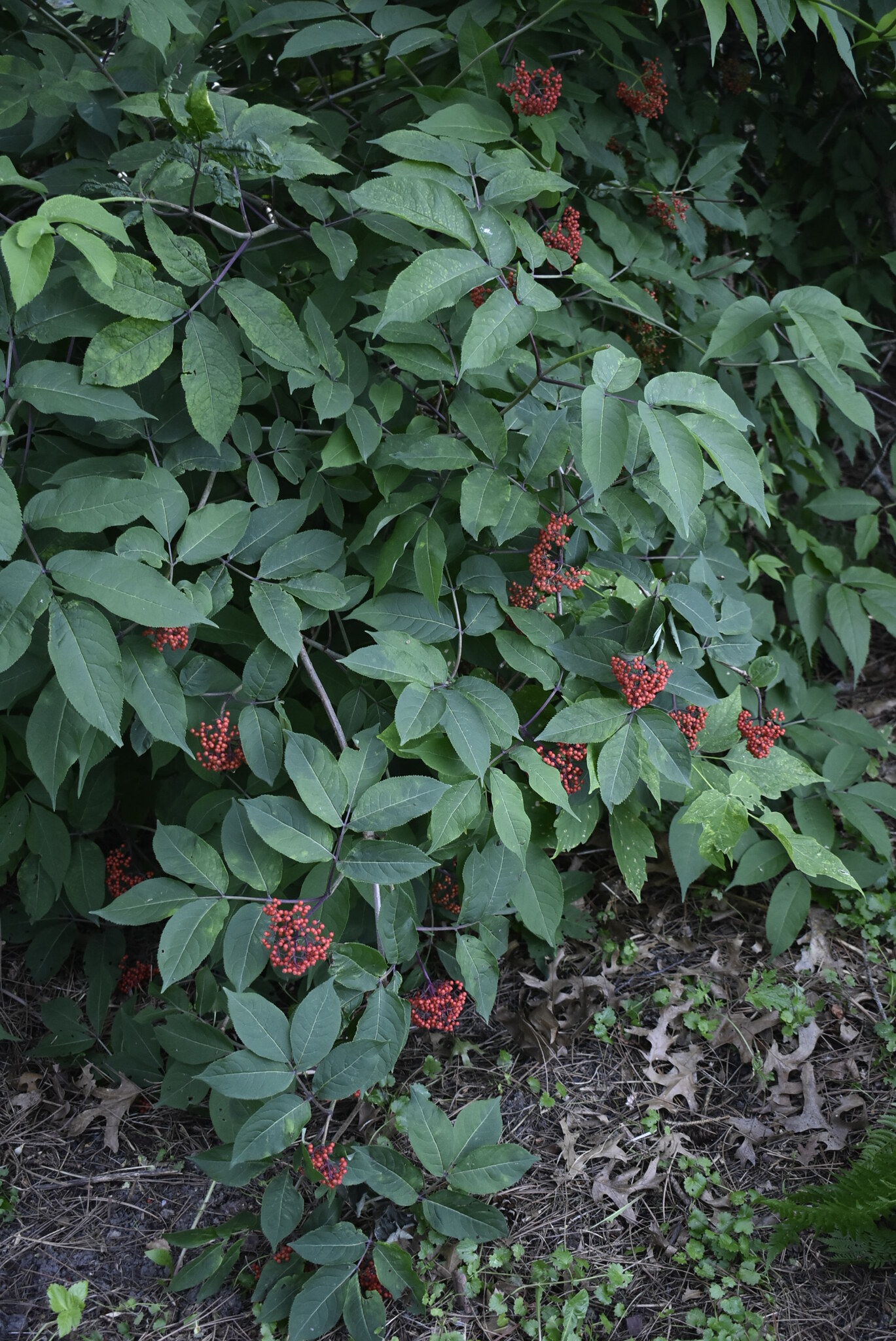
June 29, 2022, Washington County, Minnesota
Photo © Ann Rinkenberger, some rights reserved (CC-BY-NC)
iNaturalist observation
About the red elderberry
- This shrub bears clusters of tiny white flowers in spring and bright red berries in summer.
- Red elderberry is one of the first shrubs to flower in the spring in Minnesota.
- Red elderberry tends to grow in moist environments, such as in low-lying forests or along riverbanks.
- The flowers are favored by butterflies and hummingbirds, while the berries are feasted on by birds.
- Fun fact: Though some parts of the plant like the stems and leaves are toxic, the berries have long been used as a food source by indigenous people. They are often mixed with a tastier berry to improve the flavor.
Visual guide to phenology
Watch for the appearance of leaves, flowers, and fruits. Take notice of when flowers open and fruits ripen.
Note to observers
This page explains general clues to watch for when observing red elderberry phenology. However, this page does not instruct observers on how to identify this plant or collect data in a standardized way.
- For help with identification, see Minnesota Wildflowers.
- For guidance on collecting data, see Nature’s Notebook.
Graphs and historical data
Note: The Orientation Center provides a map, as well as information on reading graphs; interpreting summary statistics, who collected the data and how; and how to download datasets for independent exploration.
Leaf budbreak
- Earliest: March 16 (occurred in 2010)
- Average: April 8
- Latest: April 26 (occurred in 2013)
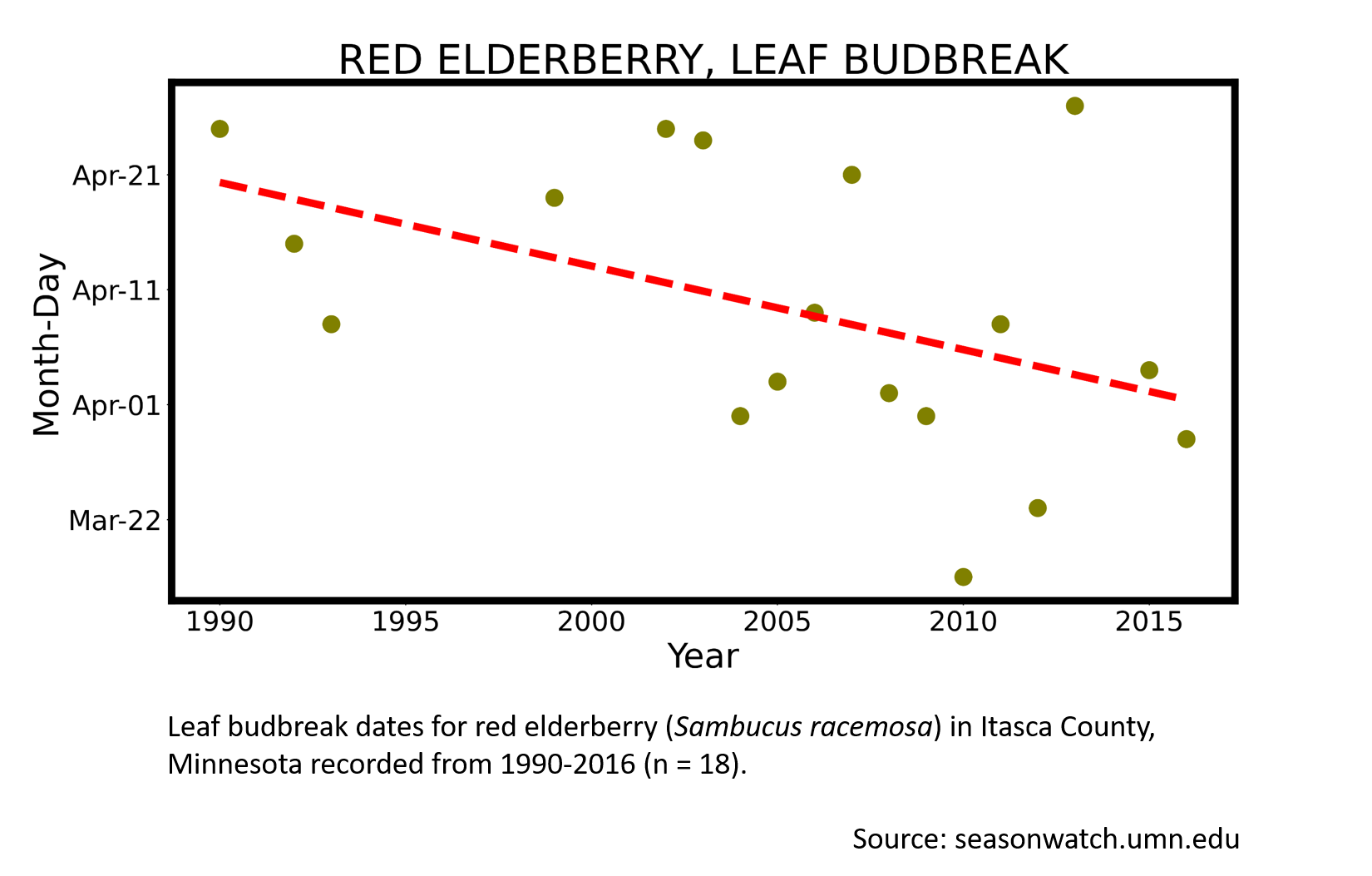
Flower buds swelling
- Earliest: March 22 (occurred in 2012)
- Average: April 16
- Latest: May 10 (occurred in 1993)
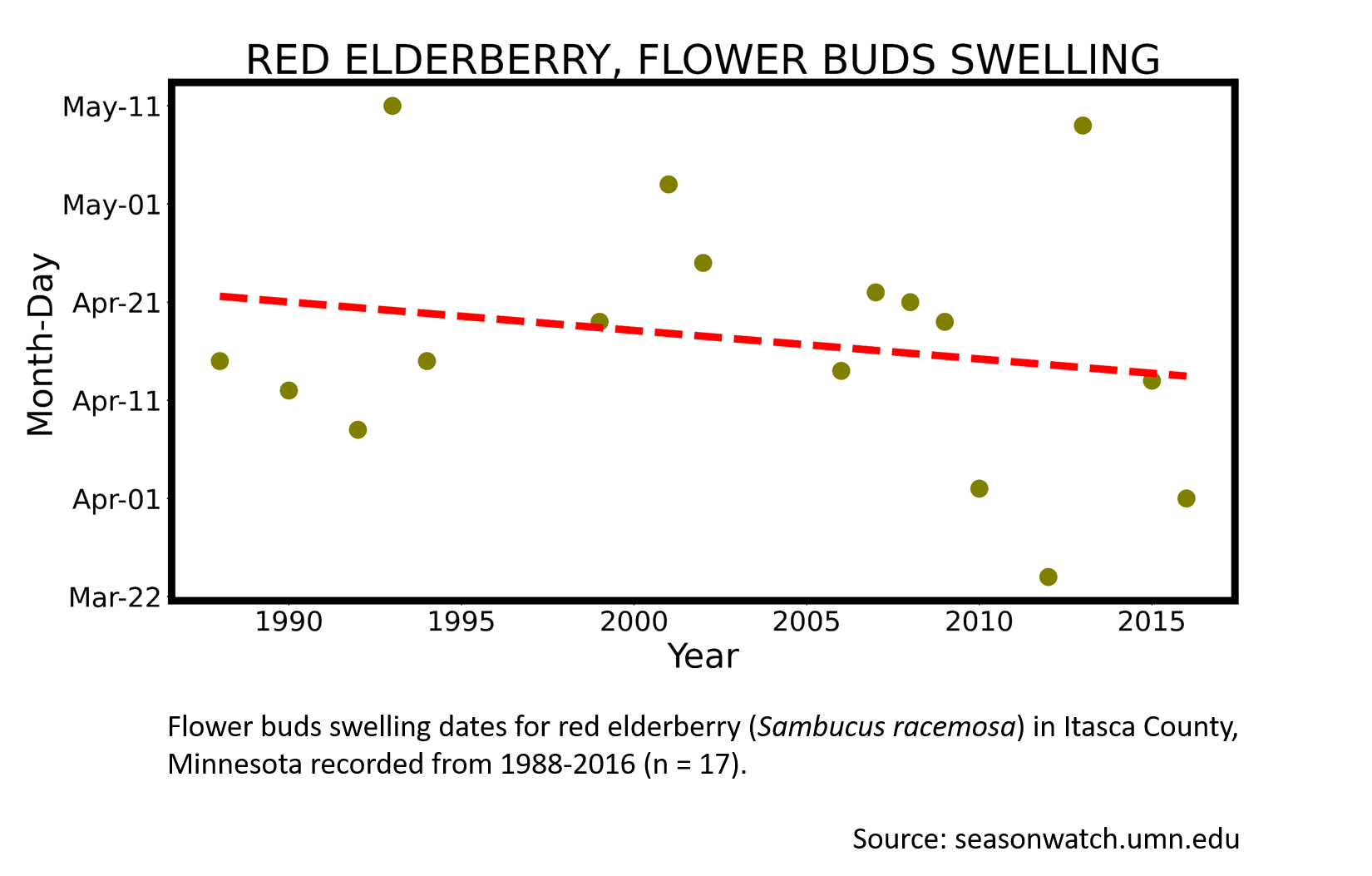
Flowering
- Earliest: April 6 (occurred in 1999)
- Average: May 9
- Latest: May 25 (occurred in 2013)
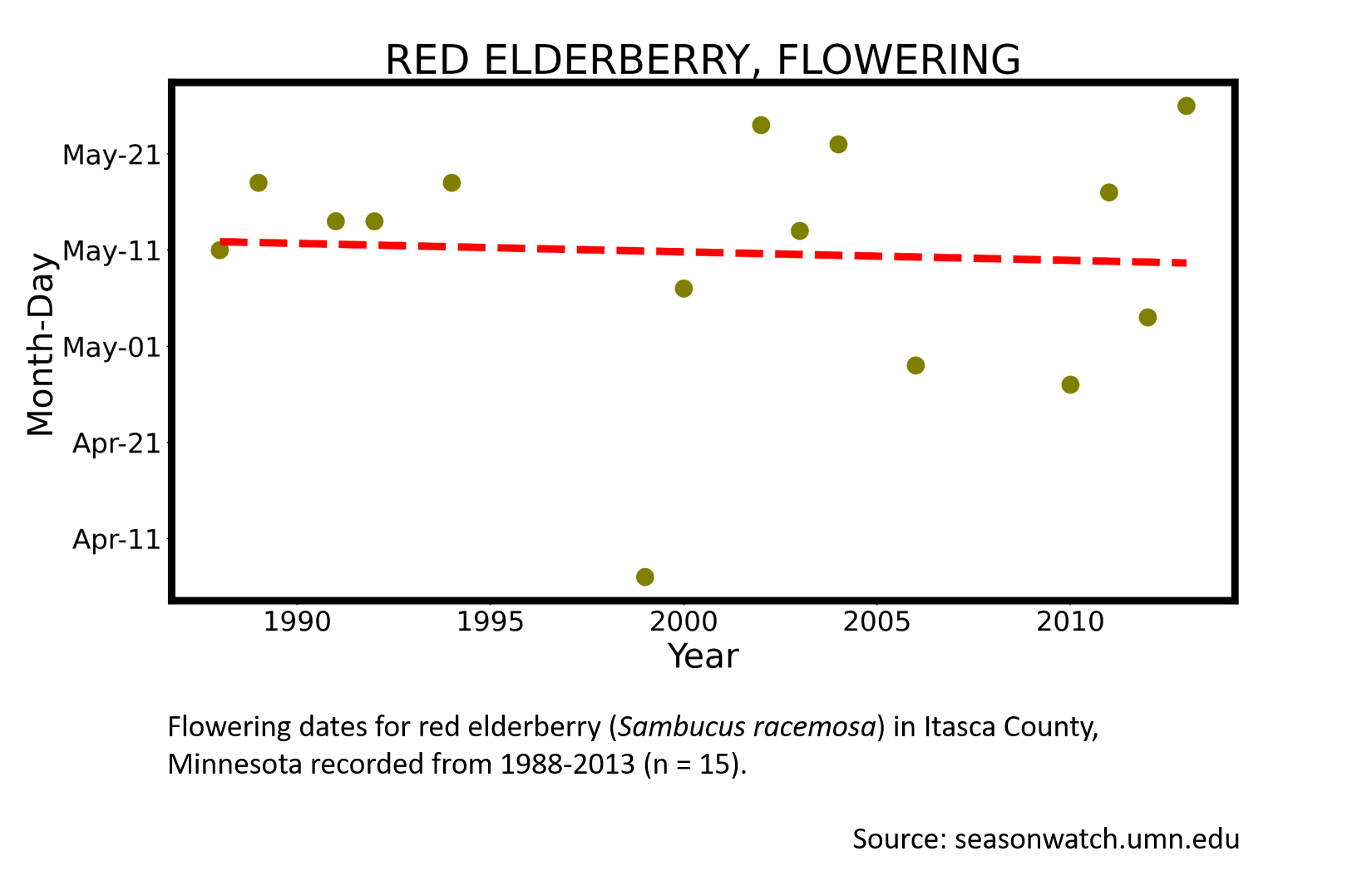
First ripe fruit
- Earliest: June 15 (occurred in 1988)
- Average: June 26
- Latest: July 8 (occurred in 2008)
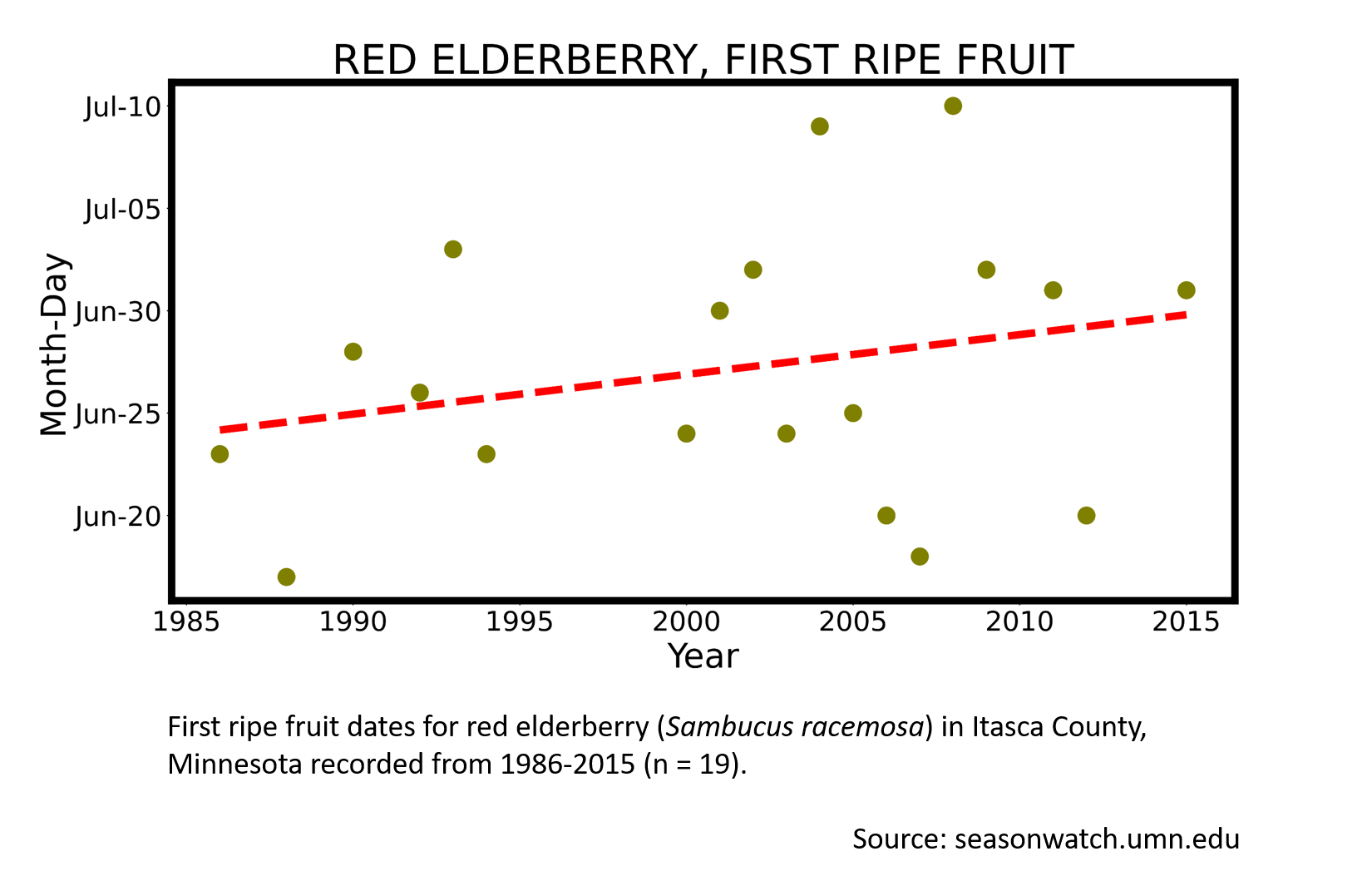
Leaf budbreak
- Earliest: March 4 (occurred in 1987)
- Average: March 31
- Latest: April 20 (occurred in 1975)
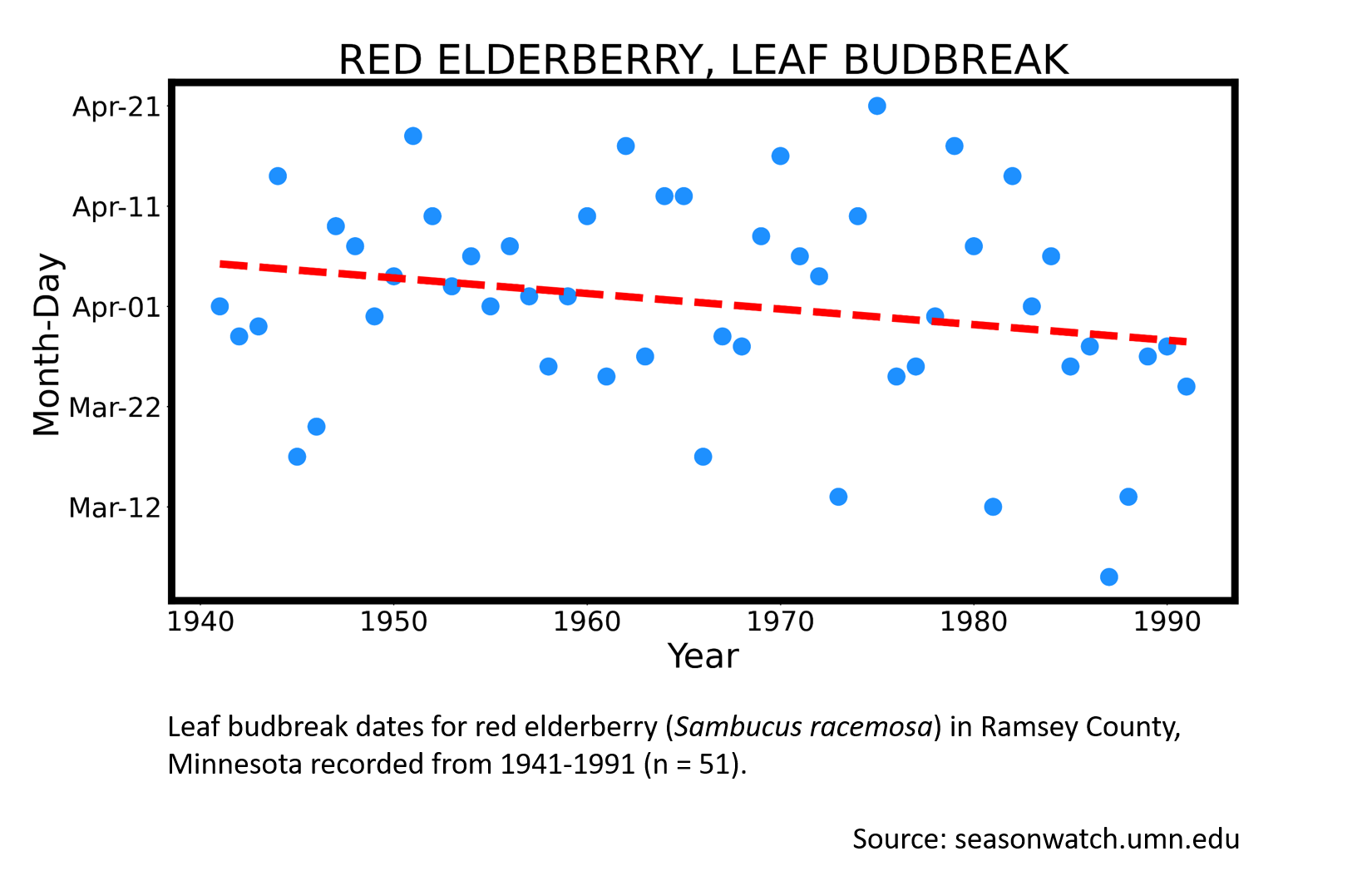
Flowering
- Earliest: April 17 (occurred in 1987)
- Average: May 4
- Latest: May 17 (occurred in 1950)
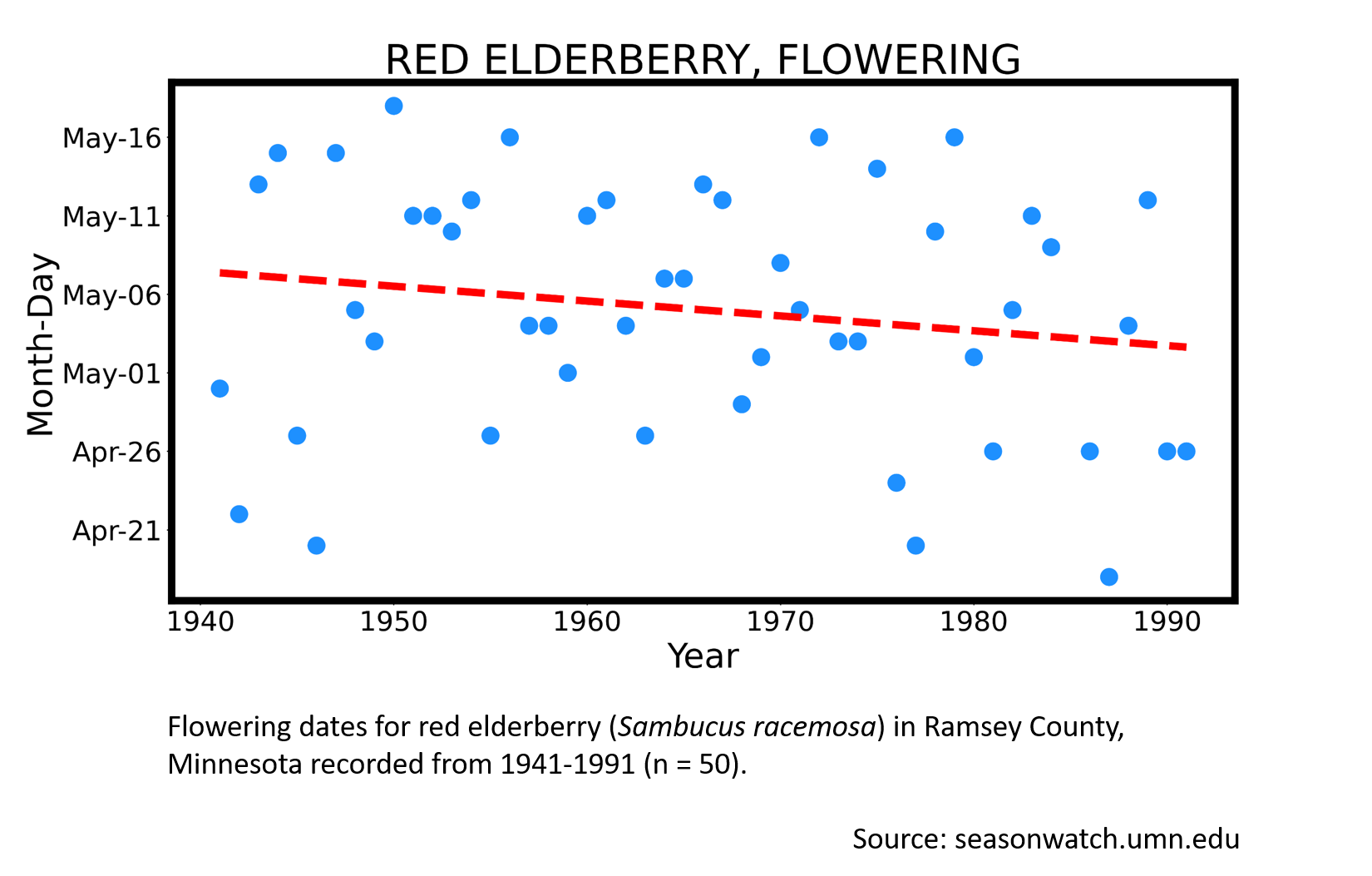
Keep exploring Season Watch
Keep exploring Season Watch
Co-author: Audrey Negro, Minnesota Master Naturalist
